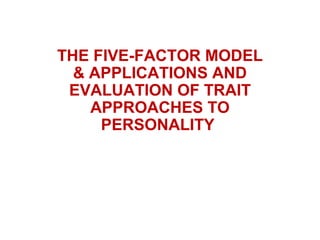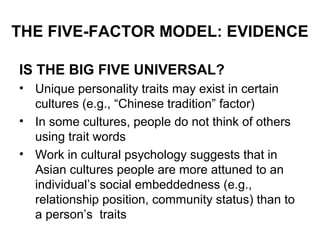The document discusses the five-factor model of personality traits. It describes evidence that supports dividing personality into five broad domains: Openness, Conscientiousness, Extraversion, Agreeableness, and Neuroticism. Research using trait terms from different languages, cross-cultural studies, and correlations between trait measures provides evidence for this five factor structure. The five factors have been shown to be stable over time while still allowing for some changes across the lifespan. Applications of the five-factor model include relationships to health, clinical diagnosis, and understanding the person-situation debate regarding trait consistency.



























